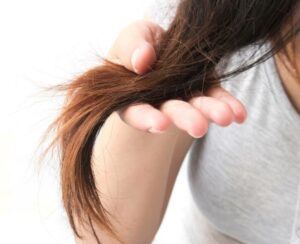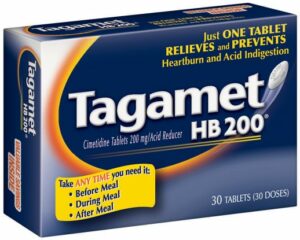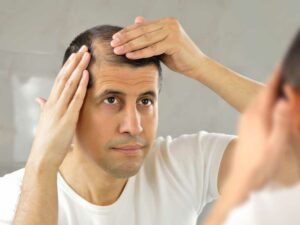Superoxide dismutases are enzymes which destroy superoxide free radical ( O2- ), an important biological mediator. In many systems ( e.g., blood vessel dialatation, blood clotting, etc.), superoxide opposes the action of another ubiquitous messenger substance, nitric oxide.
Nitric oxide is probably one “natural” form of the hair-growth stimulating drug minoxidil and a natural modulator of hair growth. Apparently, nitric oxide tells hair to start and keep growing, superoxide tells hair to stop growing and fall out.
Also, superoxide reacts with nitric oxide to form toxic products. These may be important in mediating parts of the immune response, as well as for tissue damage in a large number of diseases.
For example, Superoxide dismutase in its pharmaceutical form ” Orgotein ” is a potent antiinflammatory agent. In the US, you can only get it if you are a dog or a horse, but it is an approved drug in most of the rest of the world.
Because of their effectiveness in the general treatment of inflammatory and degenerative diseases, researchers are constantly looking at SODases and related agents in experimental animal models of disease. In the course of such studies, researchers repeatedly rediscover that SODases stimulate hair growth and decrease hair loss.
This discovery is typically followed by a patent application. This is why there are several US and foreign patents on SODases for the treatment of hair loss. BTW, I accidentally discovered this effect of SOD in the late 1970’s while doing research on diabetic rats at Bayor College of Medicine. Since I was firs, I have the prime patent.
With some exceptions, the patents listed below cover low molecular weight peptides which complex with copper or other metals to form superoxide dismutases. Again, because of the commercial possibilities, patenting, rather than publication, is the usual practice in this area.
Unfortunately, most medical reporters, doctors, etc. don’t know to look at patents, which are the first place any drug developer looks. So, a lot of stuff goes unreported and unrecognized. You heard it here first.
You can be reasonably sure that any patented agent works, at least some. First, there is no point in going through the expense and hassle of a patent for something which doesn’t work. If it doesn’t work, nobody is going to infringe it.
Second, this is an area in which the patent offices demand extraordinary proof. For example, US patent examiners are given two examples of “incredible inventions “– baldness cures and perpetual motion machines.
BTW: You can get copies of these patents through PatentQuery ( 1-800-984-9800 ) or through the respective US or European Patent Offices ( Sorry, I don’t have the procedures at hand.) I use PatentQuery for foreign patents and the local US patent depository at Rice University for US patents. PatentQuery charges $5 for the first page and 75 cents for each succeeding page. They take credit cards.
Patents:
1) Method for Stimulating Hair Growth using GLH-Cu Complexes., Picard, Loren, US Patent #5,117,061, assigned to Procyte Corporation, Pullman, Washinton.
2) GLH Pharmaceutical Compostitions and Compounds, US Pat# 5,214,032, Picard, L. to Procyte Corporation.
Note: This is the ” Iamin ” or ” Tricomin ” patent. I get a lot of questions about this compound, which the media does know. Lots of you have probably heard of it. Iamin is the Tripeptide Glycine-Histidine-Lysine complexed with a metal. Another name for it is “Liver Cell Growth Factor”. It is a potent SODase. Procyte reports significant hair-growth stimulating ability in their animal and clinical trials. Like SODase itself, Iamin is a potent antiinflammatory agent.
3) His-Gly-Gly Peptide and Derivatives Thereof for Hair Growth. Kronholm et al, US Patent #5,252,559, to: Procter and Gamble Co.
Note: Ah-ha, the largest maker of hair care stuff in the world is getting into the act. Like Iamin, another metal- binding tripeptide with SODase activity. AKA ” Copper- Binding Peptide “. The structure is Histidine-Glycine- Glycine.
An interesting patent to me personally: in patents #4 and 6 below, we claim basic metal-binding peptides as a class and give as one example His-gly ” and the like “. Our patent was published in the Bulletin of the European Patent Office a year before P&G’s was even applied for in 1990. Our US priority date is 1986.
The P&G folks did not tell the US patent office about our prior patent, a definite no-no. Besides, aside from our clear prior generic claims to this whole class of drugs, US Patent law is quite definite that a one amino-acid difference in a peptide drug is not enough to confer the novelty necessary for patentability.
Personally, I use the reverse peptide ( Gly-Gly-His ) in some formulations and find it rather effective. If P & G wants to object that I am infringing their patent, let em… OTOH, their patent may be enforcable against others.
4) Hair Growth Stimulation with Nitroxide and Other Radicals. EPO pat# 327263 B1., Proctor, P.
Note: All sorts of stuff. Basic peptides (e.g. Iamin ), SODases, nitroxide spintraps and spin labels, PBN, etc. acetylcysteine, radical scavengers, use of antiandrogens with hair growth stimulators, etc.,etc.. A ” prime patent ” which has caused several subsequent drug company patents to be rejected because of “prior art”. Gives you some Idea of where our research was several years ago.
5) Topical TEMPO, Proctor, P. US pat# 5,352,442.
Note: Unlike the Europeans, the US patent office won’t give prime patents in this area and is making us patent everything individually ( which is how P&G was able to step in ). This is the first US patent so far. Priority is what counts and we’ve sure got that.
TEMPO and related compounds are SODases, among other things. Researchers at the NCI have shown that TEMPOL, also covered in this patent, prevents hair loss in radiation treatment. Currently, we are trying for FDA approval for TEMPOL. No, it isn’t in any of our formulas yet. However, a related compound, NANO, is.
6) Topical SOD for Treating Hair loss,
Proctor, P. US Pat# 5,40,876
Abstract: SOD for treating hair loss is disclosed. The SOD has utility in a topical pharmaceutical formulation for the cosmetic treatment of hair loss and the cosmetic stimulation of hair growth. The SOD comprises copper salicylate, copper aspirinate, indomethacin copper, or a metal complex of an aminoacid and a transition metal.
This is the prime patent in this area. Even incorporates Trichomin, etc.
7) Finally, the most recent patent from the holder of the “Trichomin” patent. Note the reference to “oxidative and biochemical damage”. This is also an SODase.
Tissue Protective and Regenerative Compositions US Pat # 5,382,431 Issue Date: 1-17-95 Pickart; Loren R. Bellevue WA
Assignee: Skin Biology, Inc. Bellevue WA
Abstract
Methods are provided for preparing compositions suitable for protecting irritated or damaged skin from further oxidative and biochemical damage and thus permitting natural healing processes to progress, for accelerating the rate of healing of burns and surgical wounds, and for increasing the size of hair follicles and the rate of hair growth. The compositions generally comprise precipitates formed by the complexation of peptone digests of various proteins with copper(II) salts, indium (III) salts, tin(II) salts and tin(IV) salts.
EXAMPLE X
Stimulation of Hair Growth by Injection
This Example describes the use of compositions containing peptone-copper complexes to stimulate the growth of hair follicles in warm blooded animals.
The model used in this test was a mouse model that has been found to successfully predicts the therapeutic response in humans (see, e.g., U.S. Pat. No. 5,118,665, which is incorporated herein by reference). Hair growth in mammals proceeds through actively growing stages (anagen) followed by dormant stages (telogen). The test method generally involves applying the hair-growth stimulant to the skin of mice in telogen phase. Female, Swiss-Webster mice begin a telogen phase at about 45 days of age that lasts until about 90 days of age. After application of the active substance, enhanced hair growth is noted within 10 to 14 days. For this test, mice 50 days of age were used.
Peptone compositions containing copper(II), indium(III), tin(II) and tin(IV) were tested. For testing, the compositions were mixed with saline (5% peptone composition and 95% physiological saline by weight). Mice were shaved, then 0.05 milliliter of the mixture was infiltrated immediately below the skin by injection. Control mice were injected with an equal volume of saline. Each group contained 10 mice. After 14 days, the groups were compared. The percentage of mice with hair growth at the injection site and the relative strength of the hair growth response (on a scale of 1 to 5 where 1 is barely noticeable growth and 5 is very strong hair growth) were determined.
The results, shown in Table 7, indicate that all composition were active hair growth stimulants, with peptone- tin(II) complexes being the most effective agent.
| Percent with Hair Growth | Average Intensity of growth at injection site | |
|---|---|---|
| Control Mice | 0 | 0 |
| Peptone-copper(II) | 100% | 2.5 |
| Peptone-indium(II) | 80% | 2.5 |
| Peptone-tin(II) | 80% | 4.5 |
| Peptone-tin(Iv) | 100% | 4.0 |
EXAMPLE XI
Stimulation of Hair Growth by Topical Application
The model used in this test is as in Example X except that the active substance was applied topically to the mouse skin. Peptone compositions containing copper(II), indium(III), tin(II) and tin(IV) were tested. For testing, the compositions were mixed with saline (25% peptone composition and 75% physiological saline by weight) to form a slurry. Mice were shaved, then 0.20 grams of the mixture applied to the shaved area as smoothly as possible. Control mice were swabbed with saline. Each group contained 10 mice. After 14 days, the mouse groups were compared. The percentage of mice with hair growth in the center of the shaved area and the relative strength of the hair growth response (on a scale of 1 to 5 where 1 is barely noticeable growth and 5 is very strong hair growth) were determined. All composition were active with tin(II) being the most effective agent.
| Percent with Hair Growth | Average Intensity of Growth | |
|---|---|---|
| Control Mice | 10% | 0.2 |
| Peptone-copper(II) | 90% | 2.0 |
| Peptone-indium(II) | 80% | 2.0 |
| Peptone-tin(II) | 100% | 4.0 |
| Peptone-tin(Iv) | 100% | 3.0 |





